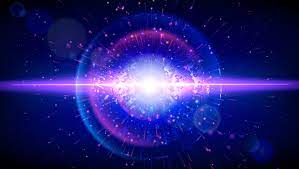Supernova explosions are among the most astonishing and cataclysmic events that occur in the vast expanse of our universe. These powerful cosmic eruptions signify the end of massive stars’ lives, unleashing an immense amount of energy and leaving behind intriguing remnants. In this blog post, we will embark on a journey to explore the captivating realm of supernova explosions, delving into their origins, various types, and the profound impact they have on the cosmos.
I. Understanding Supernovae: At its core, a supernova is a stellar explosion that occurs during the final stages of a massive star’s life. There are two primary types of supernovae: Type I and Type II. Type I supernovae result from the explosion of a white dwarf in a binary star system, while Type II supernovae occur when a massive star exhausts its nuclear fuel and collapses under its own gravitational pull.
II. The Life Cycle of Stars: To comprehend supernovae, we must first grasp the life cycle of stars. Stars form from vast clouds of gas and dust known as nebulae. Through gravitational collapse, these clouds give birth to protostars, which gradually evolve into main-sequence stars. Depending on a star’s mass, it will follow different paths leading to various outcomes, including supernova explosions.
III. The Mechanics of Supernova Explosions: The precise mechanisms triggering supernova explosions are still the subject of intense scientific investigation. In Type II supernovae, the core of a massive star collapses, causing a violent rebound known as a supernova shockwave. This shockwave propels the outer layers of the star outward, releasing an enormous amount of energy and producing a brilliant display visible across vast distances.
IV. Supernova Remnants: Supernova explosions forge elements heavier than iron, dispersing them into space and enriching the interstellar medium. The remnants of supernovae, known as supernova remnants, stand as enduring testaments to these colossal events. They consist of expanding shockwaves of gas and dust, often accompanied by a neutron star or black hole at their core. Supernova remnants play a crucial role in the formation of new stars and planetary systems.
V. The Role of Supernovae in Cosmic Evolution: Supernovae exert a profound influence on the evolution of the universe. These explosive events release immense amounts of energy, triggering the formation of new stars and shaping galaxies. Furthermore, supernovae disperse heavy elements into space, which serve as crucial building blocks for the formation of planets, moons, and even life itself.
Conclusion: Supernova explosions are captivating cosmic phenomena that have fascinated astronomers for centuries. These explosive events mark the grand finale of massive stars, releasing staggering amounts of energy and leaving behind awe-inspiring remnants. Through their cataclysmic nature, supernovae shape the cosmos, playing a vital role in the formation of stars, galaxies, and life-supporting systems. As our understanding of these remarkable events continues to evolve, we can look forward to unraveling even more mysteries of the universe through the study of supernovae.




















Add Comment